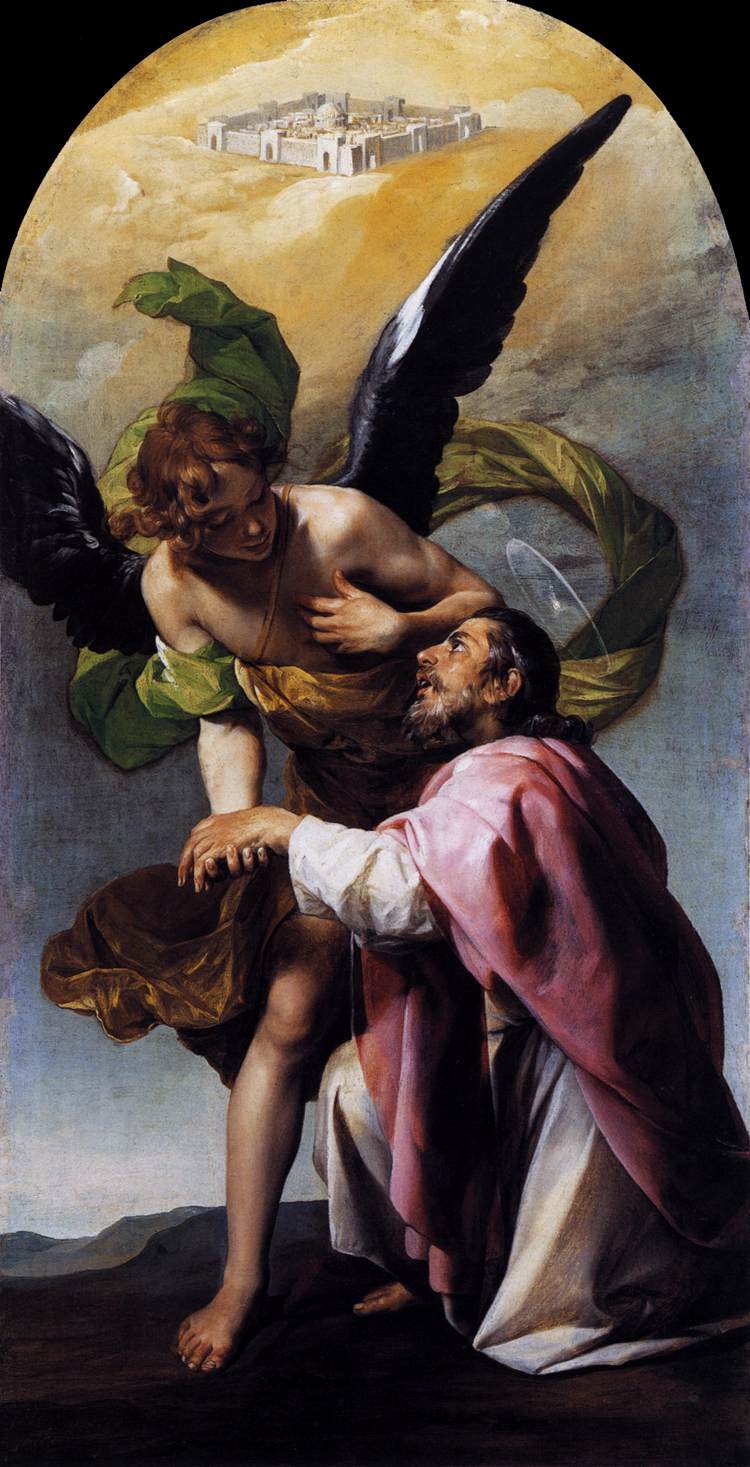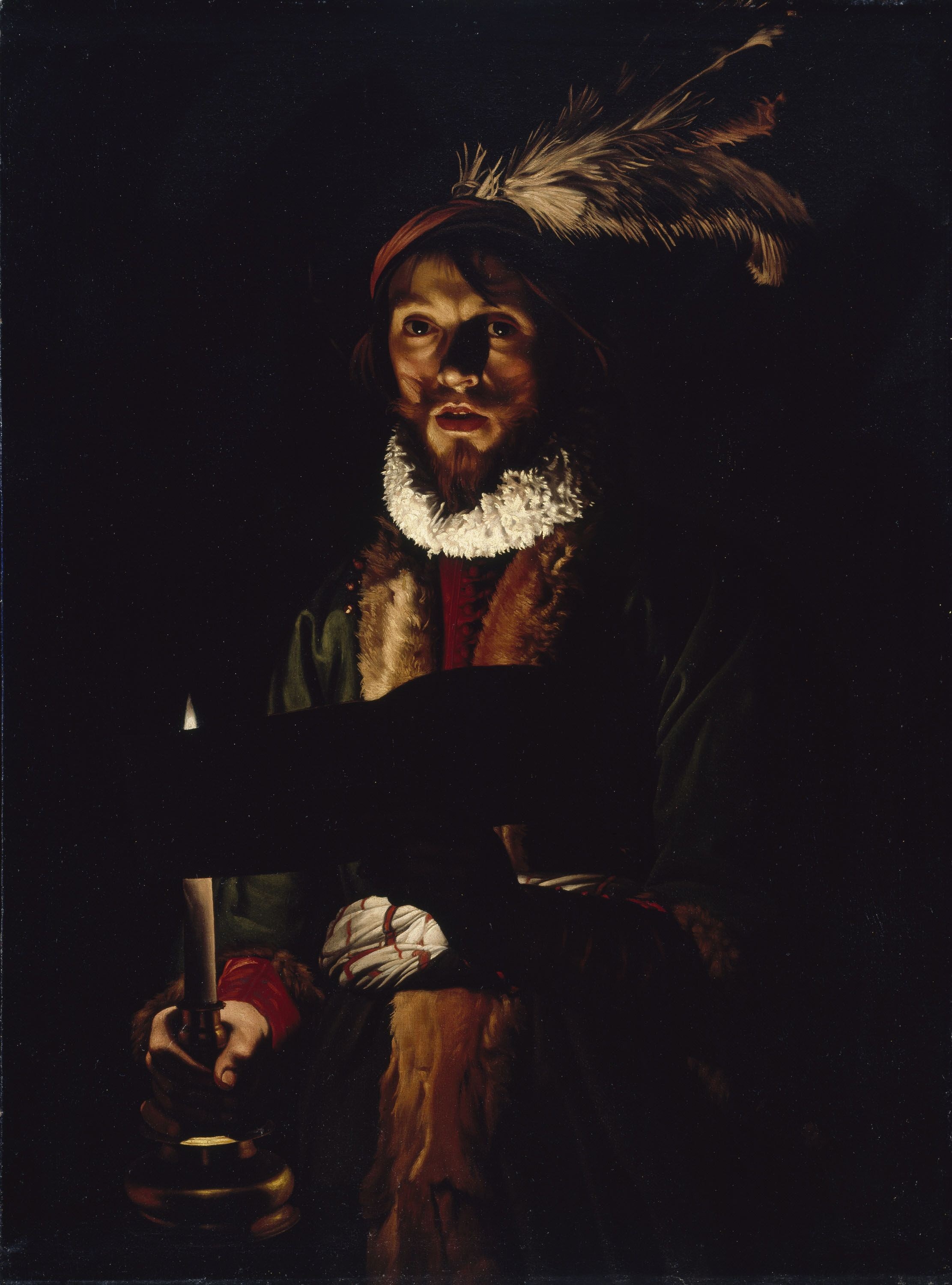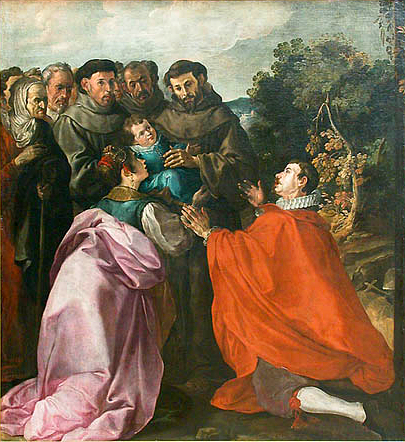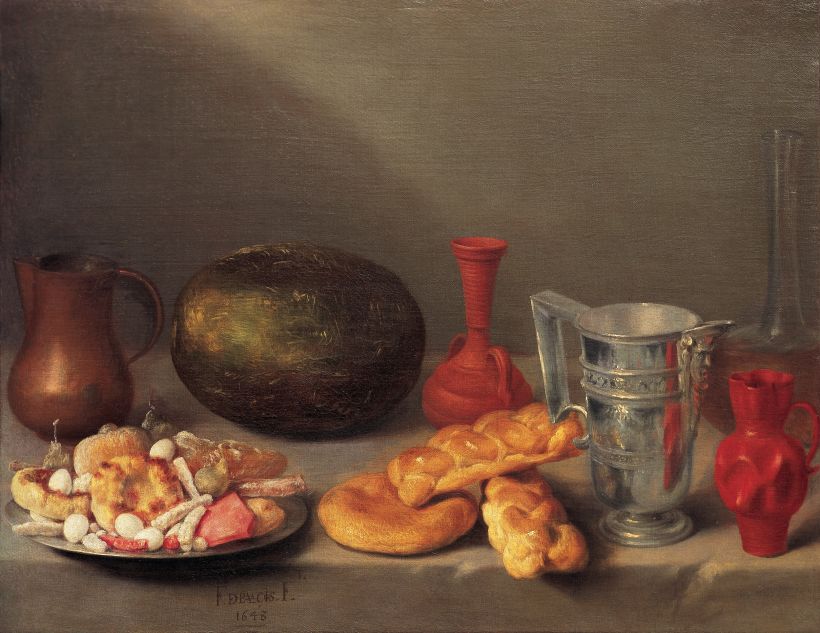|
Bartolomé Esteban Murillo
Bartolomé Esteban Murillo ( , ; late December 1617, baptized January 1, 1618April 3, 1682) was a Spanish Baroque painter. Although he is best known for his religious works, Murillo also produced a considerable number of paintings of contemporary women and children. These lively realistic portraits of flower girls, street urchins, and beggars constitute an extensive and appealing record of the everyday life of his times. He also painted two self-portraits, one in the Frick Collection portraying him in his 30s, and one in London's National Gallery portraying him about 20 years later. In 2017–18, the two museums held an exhibition of them. Childhood Murillo was probably born in December 1617 to Gaspar Esteban, an accomplished barber surgeon, and María Pérez Murillo. He may have been born in Seville or in Pilas, a smaller Andalusian town. It is clear that he was baptized in Santa Maria Magdalena, a parish in Seville in 1618. After his parents died in 1627 and 1628, he became ... [...More Info...] [...Related Items...] OR: [Wikipedia] [Google] [Baidu] |
National Gallery
The National Gallery is an art museum in Trafalgar Square in the City of Westminster, in Central London, England. Founded in 1824, it houses a collection of over 2,300 paintings dating from the mid-13th century to 1900. The current Director of the National Gallery is Gabriele Finaldi. The National Gallery is an exempt charity, and a non-departmental public body of the Department for Digital, Culture, Media and Sport. Its collection belongs to the government on behalf of the British public, and entry to the main collection is free of charge. Unlike comparable museums in continental Europe, the National Gallery was not formed by nationalising an existing royal or princely art collection. It came into being when the British government bought 38 paintings from the heirs of John Julius Angerstein in 1824. After that initial purchase, the Gallery was shaped mainly by its early directors, especially Charles Lock Eastlake, and by private donations, which now account for two-t ... [...More Info...] [...Related Items...] OR: [Wikipedia] [Google] [Baidu] |
Alonso Cano
Alonso Cano Almansa or Alonzo Cano (19 March 16013 September 1667) was a Spanish painter, architect, and sculptor born in Granada.Alonso Cano – article Biography  He learned architecture from his father, Miguel Cano; painting in the ac ...
He learned architecture from his father, Miguel Cano; painting in the ac ...
[...More Info...] [...Related Items...] OR: [Wikipedia] [Google] [Baidu] |
Seville Cathedral
The Cathedral of Saint Mary of the See ( es, Catedral de Santa María de la Sede), better known as Seville Cathedral, is a Roman Catholic cathedral in Seville, Andalusia, Spain. It was registered in 1987 by UNESCO as a World Heritage Site, along with the adjoining Alcázar palace complex and the General Archive of the Indies. It is the fourth-largest church in the world (its size remains a matter of debate) as well as the largest Gothic church. After its completion in the early 16th century, Seville Cathedral supplanted Hagia Sophia as the largest cathedral in the world, a title the Byzantine church had held for a thousand years. The Gothic section alone has a length of , a width of , and its maximum height in the center of the transept is . The total height of the Giralda tower from the ground to the weather vane is . Seville Cathedral was the site of the baptism of Infante Juan of Aragon in 1478, only son of the Catholic Monarchs Ferdinand II of Aragon and Isabella I of C ... [...More Info...] [...Related Items...] OR: [Wikipedia] [Google] [Baidu] |
Musée Du Louvre
The Louvre ( ), or the Louvre Museum ( ), is the world's most-visited museum, and an historic landmark in Paris, France. It is the home of some of the best-known works of art, including the ''Mona Lisa'' and the ''Venus de Milo''. A central landmark of the city, it is located on the Right Bank of the Seine in the city's 1st arrondissement (district or ward). At any given point in time, approximately 38,000 objects from prehistory to the 21st century are being exhibited over an area of 72,735 square meters (782,910 square feet). Attendance in 2021 was 2.8 million due to the COVID-19 pandemic, up five percent from 2020, but far below pre-COVID attendance. Nonetheless, the Louvre still topped the list of most-visited art museums in the world in 2021."The Art Newspaper", 30 March 2021. The museum is housed in the Louvre Palace, originally built in the late 12th to 13th century under Philip II. Remnants of the Medieval Louvre fortress are visible in the basement ... [...More Info...] [...Related Items...] OR: [Wikipedia] [Google] [Baidu] |
The Angels' Kitchen
''The Angels' Kitchen'' is a 1646 oil on canvas painting by Bartolomé Esteban Murillo, originally produced for a small Franciscan monastery in the artist's native Seville. From at least 1810 it was in the Alcázar of Seville, before being looted by Marshal Soult, arriving in his collection in Paris in 1813. The French state bought it in the sale of Soult's collection in 1858 and it has hung in the Louvre, in Paris, ever since. Michel Butor included it in his list of 105 decisive masterpieces of Western art. History It originally formed part of a set of twelve works, the others being: *''The Ecstacy of Saint Francis'' and ''Saint Diego Feeding Beggars'' (both Real Academia de Bellas Artes de San Fernando, Madrid) *''Brother Julian of Alcala'' and ''The Soul of Philip II'' (Clark Art Institute, Williamstown, USA) *''The Death of Saint Clare'' (Dresden Gemäldegalerie) *''Immaculate Conception'' and ''Saint Diego'' (lost) *''Saint Didacus of Alcalá and the Bishop of Pamplona'' ... [...More Info...] [...Related Items...] OR: [Wikipedia] [Google] [Baidu] |
Tenebrism
Tenebrism, from Italian ' ("dark, gloomy, mysterious"), also occasionally called dramatic illumination, is a style of painting using especially pronounced chiaroscuro, where there are violent contrasts of light and dark, and where darkness becomes a dominating feature of the image. The technique was developed to add drama to an image through a spotlight effect, and is common in Baroque paintings. Tenebrism is used only to obtain a dramatic impact while chiaroscuro is a broader term, also covering the use of less extreme contrasts of light to enhance the illusion of three-dimensionality. Baroque The artist Caravaggio is generally credited with the invention of the style, although this technique was used by earlier artists such as Albrecht Dürer, Tintoretto and El Greco. The term is usually applied to artists from the seventeenth century onward. Artemisia Gentileschi, a rare female artist of the Baroque and a follower of Caravaggio, was an outstanding exponent of tenebrism. ... [...More Info...] [...Related Items...] OR: [Wikipedia] [Google] [Baidu] |
Bartolomé Esteban Perez Murillo 014
Bartolomé may refer to: Places * Bartolomé Island (Spanish: Isla Bartolomé), a volcanic islet in the Galápagos Islands Group * Isla Bartolomé, Diego Ramirez Islands, Chile People * Bartolomé Bermejo (c.1440–c.1501), Spanish painter * Bartolomé Esteban Murillo (1618–1682), Spanish painter * Bartolomé de Escobedo (1500–1563), Spanish composer * Bartolomé de las Casas Bartolomé de las Casas, OP ( ; ; 11 November 1484 – 18 July 1566) was a 16th-century Spanish landowner, friar, priest, and bishop, famed as a historian and social reformer. He arrived in Hispaniola as a layman then became a Dominican friar ... (1484–1566), Spanish priest * Bartolomé de Medina, (149?–15??), Spanish metallurgist * Bartolomé de Medina, (1527–1581), Spanish theologian See also * Bartholomew (other) {{Disambig, geo, surname Spanish masculine given names ... [...More Info...] [...Related Items...] OR: [Wikipedia] [Google] [Baidu] |
Francisco Herrera The Elder
Francisco Herrera (1576–1656) was a distinguished Spanish painter, born in Seville. He was the founder of the Seville school. Biography Francisco Herrera was born in Seville in 1576. Francisco Pacheco was his teacher, but Herrera soon broke away from the timid style and Italian traditions of Spanish painting of his day, and became the pioneer of that bold, vigorous, effective, and natural style whose preeminent exponent was Velázquez. Herrera was the first to use long brushes, which may, in part, account for his "modern" technique and dexterous brushwork. Many authorities ascribe to him the foundation of the Spanish School. His great talent brought him many pupils, whom his passionate temper and rough manners soon drove away. Velázquez, when thirteen years old, was placed under this great professor, and remained a year with him. Herrera, who was an accomplished worker in bronze, engraved medals skilfully. This gave rise to the charge of counterfeiting, and he fled for sa ... [...More Info...] [...Related Items...] OR: [Wikipedia] [Google] [Baidu] |
Joachim Von Sandrart
Joachim von Sandrart (12 May 1606 – 14 October 1688) was a German Baroque art-historian and painter, active in Amsterdam during the Dutch Golden Age. He is most significant for his collection of biographies of Dutch and German artists the '' Teutsche Academie'', published between 1675 and 1680. Biography Sandrart was born in Frankfurt am Main, but the family originated from Mons. According to his dictionary of art called the '' Teutsche Academie'', he learned to read and write from the son of Theodor de Bry, Johann Theodoor de Brie and his associate Matthäus Merian, but at age 15 was so eager to learn more of the art of engraving, that he walked from Frankfurt to Prague to become a pupil of Aegidius Sadeler of the Sadeler family. Sadeler in turn urged him to paint, whereupon he travelled to Utrecht in 1625 to become a pupil of Gerrit van Honthorst, and through him he met Rubens when he brought a visit to Honthorst in 1627, to recruit him for collaboration on part of his Marie ... [...More Info...] [...Related Items...] OR: [Wikipedia] [Google] [Baidu] |
Francisco De Palacios
Francisco de Palacios, also Francisco Palacios, (1623-January 1652), was a Spanish Baroque painter. Biography De Palacios was initially known through only two small still lifes, acquired in Madrid in late seventeenth century by Count Ferdinand Harrach Buenaventura, published by August L. Mayer in 1922, and two paintings of '' San Onofre'' and '' San Francisco de Asis'' in the convent Calatravas Moralzarzal (Madrid). When the paintings were first seen, Buenaventura saw the influence of Antonio Ponz, and thought maybe the author was El Greco, so he was surprised when he recognized the signing of Palacios. Palacios was therefore primarily understood to be a still life painter until later research revealed he had done portraits and landscapes as well. In January 1646 he married Josefa Berges, daughter of painter and paint merchant Francisco Berges, stating in the contract they were both older than twenty. The couple had two children, and in December 1651, being seriously ill, g ... [...More Info...] [...Related Items...] OR: [Wikipedia] [Google] [Baidu] |
Diego Velázquez
Diego Rodríguez de Silva y Velázquez (baptized June 6, 1599August 6, 1660) was a Spanish painter, the leading artist in the court of King Philip IV of Spain and Portugal, and of the Spanish Golden Age. He was an individualistic artist of the Baroque period (c.1600–1750). He began to paint in a precise tenebrist style, later developing a freer manner characterized by bold brushwork. In addition to numerous renditions of scenes of historical and cultural significance, he painted scores of portraits of the Spanish royal family and commoners, culminating in his masterpiece '' Las Meninas'' (1656). Velázquez's paintings became a model for 19th-century realist and impressionist painters. In the 20th century, artists such as Pablo Picasso, Salvador Dalí, and Francis Bacon paid tribute to Velázquez by re-interpreting some of his most iconic images. Most of his work entered the Spanish royal collection, and by far the best collection is in the Museo del Prado in Madrid, tho ... [...More Info...] [...Related Items...] OR: [Wikipedia] [Google] [Baidu] |
Madrid
Madrid ( , ) is the capital and most populous city of Spain. The city has almost 3.4 million inhabitants and a Madrid metropolitan area, metropolitan area population of approximately 6.7 million. It is the Largest cities of the European Union by population within city limits, second-largest city in the European Union (EU), and its wikt:monocentric, monocentric Madrid metropolitan area, metropolitan area is the List of metropolitan areas in Europe by population, third-largest in the EU.United Nations Department of Economic and Social AffairWorld Urbanization Prospects (2007 revision), (United Nations, 2008), Table A.12. Data for 2007. The municipality covers geographical area. Madrid lies on the Manzanares (river), River Manzanares in the central part of the Iberian Peninsula. Capital city of both Spain (almost without interruption since 1561) and the surrounding Community of Madrid, autonomous community of Madrid (since 1983), it is also the political, economic and c ... [...More Info...] [...Related Items...] OR: [Wikipedia] [Google] [Baidu] |









